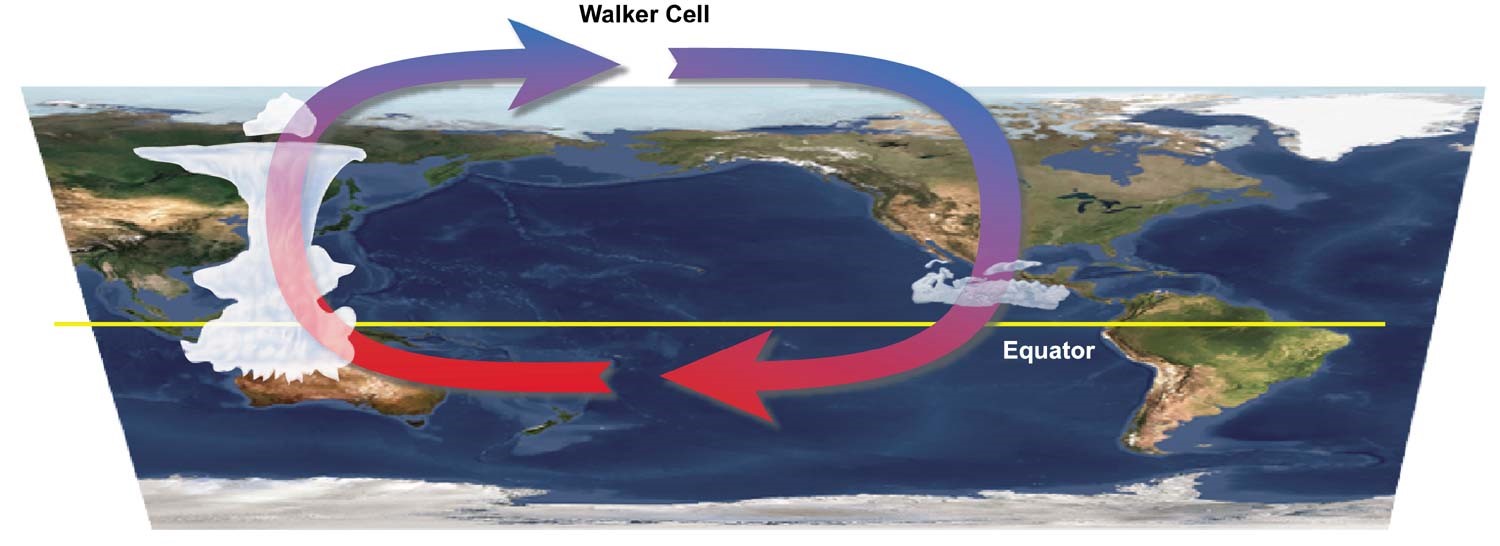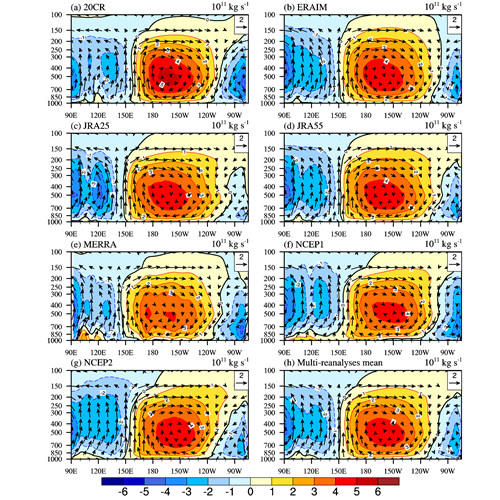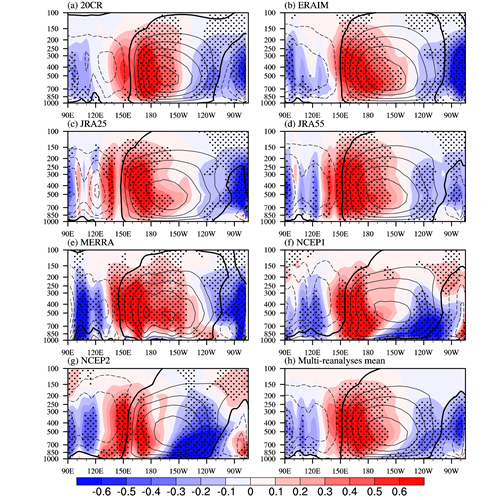The tropical Pacific Walker circulation (PWC) is one of the important atmospheric systems (Fig. 1). PWC has significant impacts on the global climate change through teleconnections. The change of PWC under global warming has been a hot topic of climate change community. The change of PWC and corresponding possibly mechanism have been discussed in many previous studies, which mainly focus on the PWC intensity, but less effort has been devoted to the study on how the whole 3-dimmensional structure of the PWC changed in the recent three decades.

Figure 1. Sketch of the tropical Pacific Walker circulation. (Image taken from the lecture materials http://www.asu.edu/courses/gph111/GenCirculation/111_GenCirculationOceans.html )
The zonal mass streamfunction can depict intuitively the PWC structure, characterized by an enclosed and clockwise rotation cell in the zonal-vertical section over the equatorial Pacific (Fig. 2). MA Shuangmei and ZHOU Tianjun, from Institute of Atmospheric Physics (IAP/CAS), analyzed the changes of the whole 3-dimmensional structure of the PWC during the recent three decades in 7 sets of reanalysis data, based on the zonal mass streamfunction and other associated climate variables. They show evidences that the PWC has robustly strengthened and shifted westward during the recent three decades, with a strengthening trend of 15.08% decade-1 and a westward shifting trend of 3.708 longitude decade-1 in the ensemble mean of 7 sets of reanalysis data (Fig. 3).

Figure 2. The mean zonal- vertical structure of the tropical PWC in (a) 20CR, (b) ERAIM, (c) JRA25, (d) JRA55, (e) MERRA, (f) NCEP1, (g) NCEP2, and (h) multiple reanalysis ensemble mean. Shading and contours are for zonal mass streamfunction, vectors are the composite of velocity and zonal divergent wind. (Ma and Zhou 2016)

Figure 3. Long-term mean (contours) and linear trends (shading) of the annual zonal mass streamfunction along the equatorial Pacific (5oS-5oN) from 1979-2012 in (a) 20CR, (b) ERAIM, (c) JRA25, (d) JRA55, (e) MERRA, (f) NCEP1, (g) NCEP2, and (h) multi-reanalyses ensemble mean, with trends that are statistically significant at the 5% level been dotted. (Ma and Zhou, 2016)
To understand the mechanism of above PWC change, the results of AMIP simulations (i.e. using the observed SST to force the atmospheric general circulation) of 26 CMIP5 models were further analyzed. They found that the models successfully reproduced the observed strengthening and westward shift of PWC, indicative of a dominant forcing of the La Niña-like SST anomalies to the observed PWC change.
The finding is recently published in Journal of Climate.
Reference:
Ma, S., T. Zhou, 2016: Robust strengthening and westward shift of the tropical Pacific Walker circulation during 1979~2012: a comparison of 7 sets of reanalysis data and 26 CMIP5 models. J. Climate, 29(6), 3097−3118, doi: http://dx.doi.org/10.1175/JCLI-D-15-0398.1.
Contact: ZHOU Tianjun, zhoutj@lasg.iap.ac.cn
